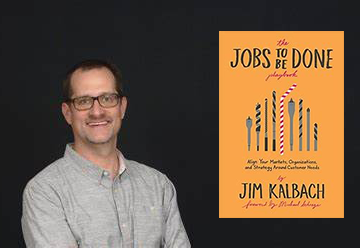Driving Success through User-centric Design

GUEST POST from Chateau G Pato
In today’s fast-paced and highly competitive market, businesses can no longer solely rely on creating products based on assumptions or mere technical feasibility. Instead, they need to embrace a user-centric approach that prioritizes the needs and desires of their target audience. This is where design thinking comes into play. Design thinking is a problem-solving methodology that emphasizes empathy, ideation, prototyping, and continuous iteration. By incorporating design thinking principles into product development, businesses can drive success by delivering products that truly resonate with their users. In this article, we will explore the concept of design thinking and present two case studies that exemplify its effectiveness in creating successful products.
Case Study 1: Apple iPhone – Revolutionizing the Smartphone Industry
The Apple iPhone serves as a remarkable example of how design thinking can drive success in product development. Before the iPhone was introduced in 2007, smartphones were typically bulky, complicated, and lacked an intuitive user interface. Apple understood the need for a revolutionary design that prioritized the user experience. By immersing themselves in the lives of potential users and empathizing with their frustrations, Apple’s team of designers identified key pain points such as complex navigation, limited functionality, and lack of touch-based interaction.
Applying the principles of design thinking, Apple ideated and prototyped various concepts until they arrived at the iconic iPhone design. They focused on simplicity, ease of use, and intuitive gestures, leading to the creation of a touchscreen interface that eliminated the need for physical keyboards. The iPhone’s user-centric design not only won over millions of users but also disrupted the entire smartphone industry. By prioritizing the needs and desires of users, Apple achieved unprecedented success and set new standards for smartphone design.
Case Study 2: Airbnb – Revolutionizing the Hospitality Industry
Airbnb, the popular accommodation platform, utilized design thinking to redefine the hospitality industry. The founders of Airbnb recognized that travelers were seeking unique, affordable, and personalized experiences rather than sterile hotel rooms. By observing potential users and conducting in-depth interviews, they empathized with the pain points of both guests and hosts, including lack of trust, limited options, and cumbersome booking processes.
Applying design thinking principles, Airbnb ideated innovative solutions that addressed these pain points. They created a platform that connected hosts and guests, allowing users to personalize their travel experiences. To instill trust, Airbnb introduced user profiles, reviews, and secure payment systems.
Furthermore, Airbnb continuously iterated its platform based on user feedback, driving greater success. This user-centric approach revolutionized the hospitality industry, empowering individuals to monetize their spaces and providing travelers with unique, affordable, and authentic accommodations.
Conclusion
Design thinking offers a powerful framework for businesses to optimize product development processes. The case studies of Apple iPhone and Airbnb demonstrate how incorporating the principles of design thinking leads to successful, user-centric products. By empathizing with users, identifying pain points, and continuously iterating, businesses can deliver products that not only meet but exceed user expectations. As the market becomes increasingly user-driven, organizations that embrace design thinking have a competitive edge in driving success through user-centric design.
SPECIAL BONUS: Futurology is not fortune telling. Futurists use a scientific approach to create their deliverables, but a methodology and tools like those in FutureHacking™ can empower anyone to engage in futurology themselves.
Image credit: Unsplash
![]() Sign up here to get Human-Centered Change & Innovation Weekly delivered to your inbox every week.
Sign up here to get Human-Centered Change & Innovation Weekly delivered to your inbox every week.
 The Jobs-to-be-Done (JTBD) approach offers a unique lens for viewing the people you serve. Instead of looking at the demographic and psychographic factors of consumption, JTBD focuses on what people seek to achieve in a given circumstance. People don’t “hire” products and services because of the demographic they belong to; instead, they employ solutions to get a job done.
The Jobs-to-be-Done (JTBD) approach offers a unique lens for viewing the people you serve. Instead of looking at the demographic and psychographic factors of consumption, JTBD focuses on what people seek to achieve in a given circumstance. People don’t “hire” products and services because of the demographic they belong to; instead, they employ solutions to get a job done.


 I had the opportunity to meet and chat with local ethnographic researcher Cynthia DuVal about the role of ethnographic research in the innovation process, and she shared an insight that I thought I would share with the rest of you.
I had the opportunity to meet and chat with local ethnographic researcher Cynthia DuVal about the role of ethnographic research in the innovation process, and she shared an insight that I thought I would share with the rest of you.
 Because the team will likely only get the insights mostly right, it is important that your go-to-market processes include a great deal of modularity and flexibility. In the same way that product development processes have to design for certain components that are ‘likely’ to be available, but also have a backup design available that substitutes already released components–should the cutting edge components not be ready in time.
Because the team will likely only get the insights mostly right, it is important that your go-to-market processes include a great deal of modularity and flexibility. In the same way that product development processes have to design for certain components that are ‘likely’ to be available, but also have a backup design available that substitutes already released components–should the cutting edge components not be ready in time.